Sansevieria cylindrica is also known as African Spear and cylindrical snake plant, and less commonly as Elephant's toothpick and Skyline Spear sansevieria.
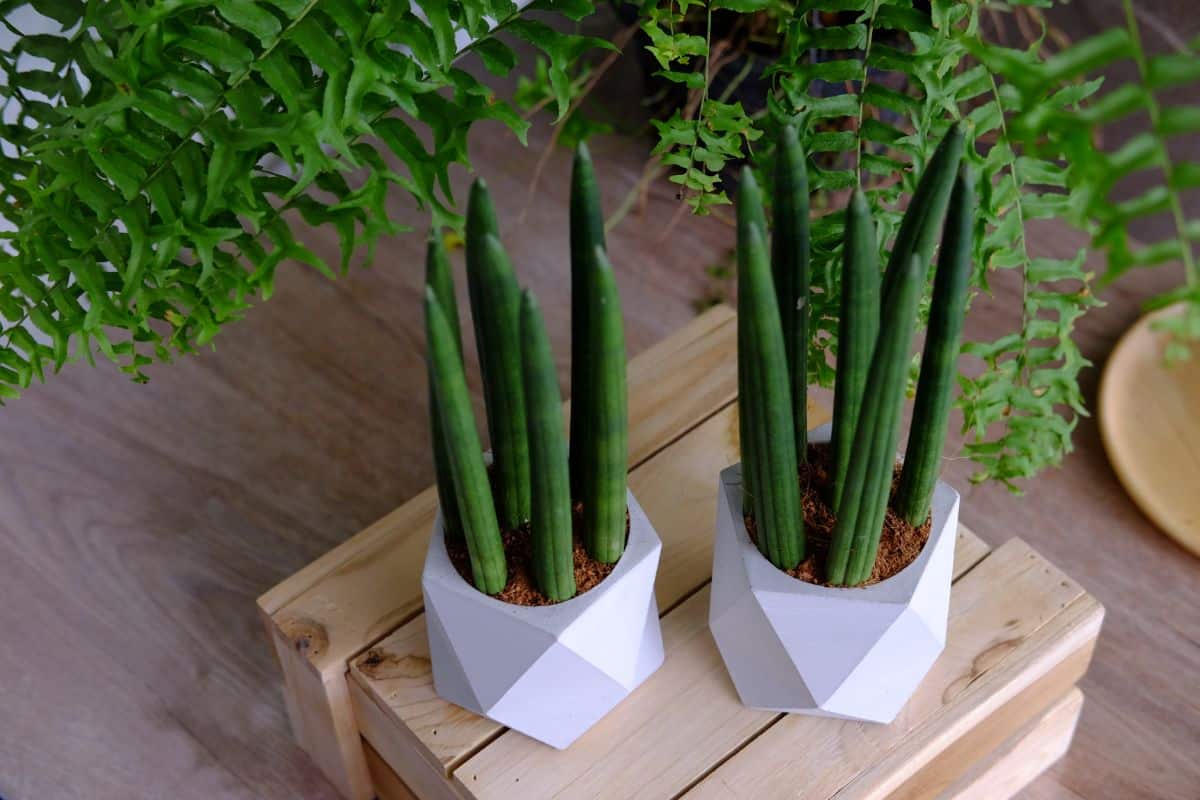
All of these are apt names for this unique, robust plant.
Jump to:
All About Sansevieria Cylindrica(African Spear)
| Name: | Sansevieria cylindrica |
| Soil: | Well-drained soil |
| Blooming: | Spring |
| Light: | Bright indirect sunlight or full sun |
| Water: | When the soil is completely dry |
| Propagation: | Cuttings and offsets |
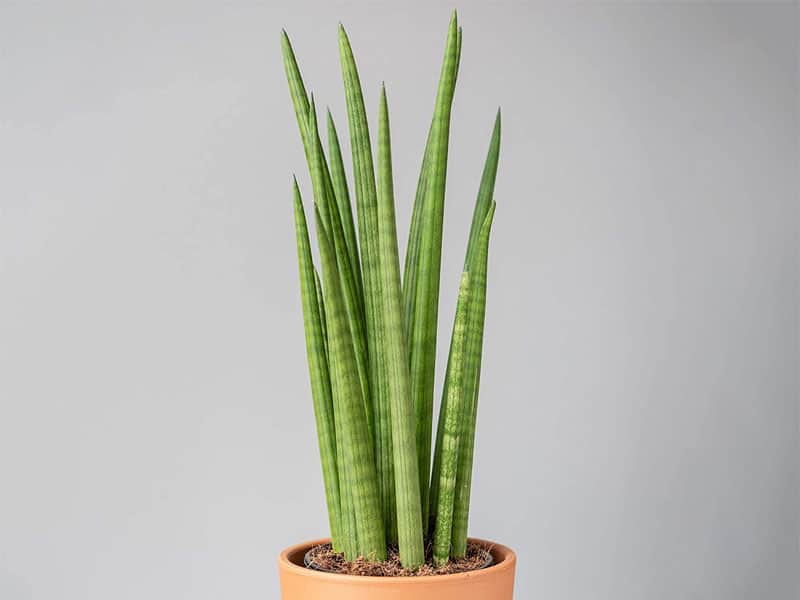
Cylindrica is a succulent indigenous to Angola. The plant spreads horizontally via an underground rhizome (a kind of stem modified to act as a root). It is a very hardy plant - able to endure all but the most extreme neglect.
It is perennial and evergreen, so you can expect it to stick around for a long time. Cylindrica has impressive "leaves." They can grow to be as tall as 6 feet! The tubular leaf is often an inch thick at maturity, which is necessary to support such height.
A common practice among the more involved gardeners is to braid the stalks together and secure them with a rope or band at the top. Such controlled growth creates an elegant form of a normally rowdy plant.
This method is best employed while the stalks are still short and young; you would have a lot of trouble convincing mature leaves to contort themselves in that way.
Best Climate Conditions
African spear plants like to grow in temperatures that are comfortable and mild. Extreme heat and extremely cold climates are not suitable for these plants, and therefore should be grown in greenhouses or in the house in these locations to ensure survival.
Temperatures between 50 and 85 °F (10-29 °C) are perfect for these plants. Pair these temperatures with optimal indirect sunlight, and your plant will thrive and flower.
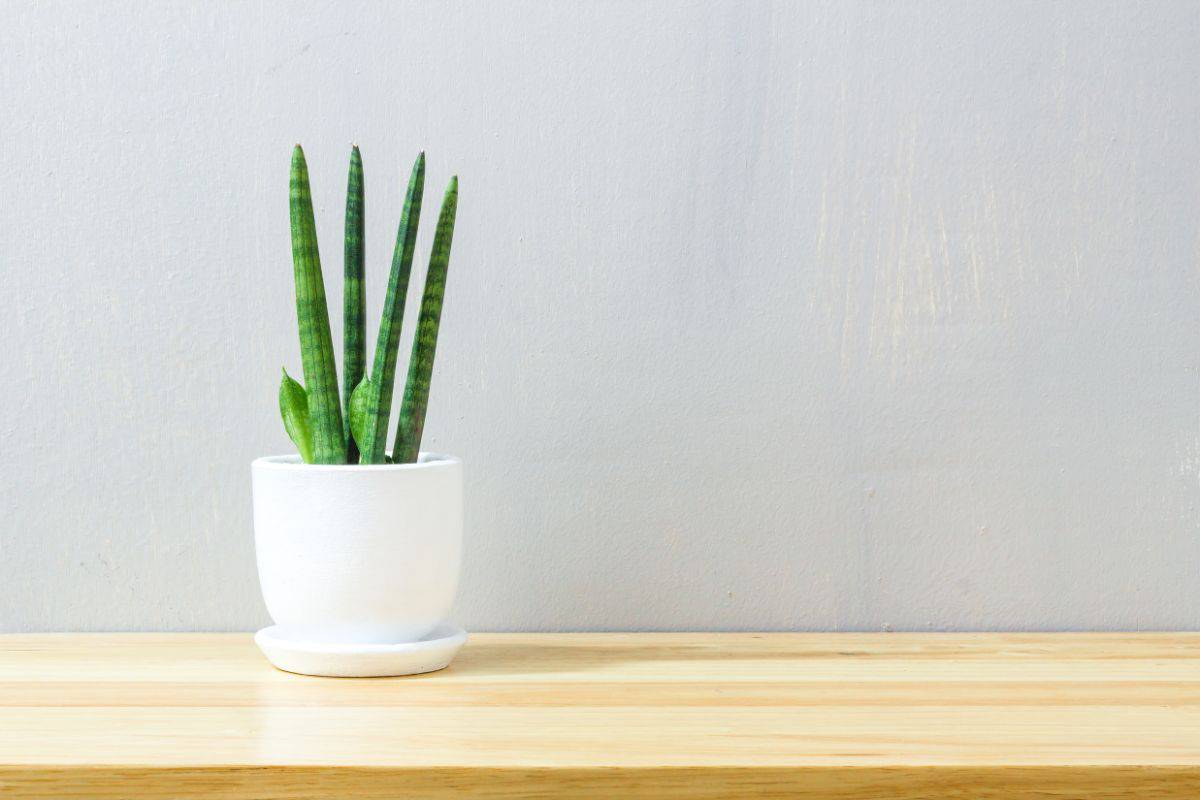
How often to water Sansevieria?
Only water the succulent when the soil is completely dry. Following a watering schedule is not appropriate for these plants as you must be dynamic and adapt the care to the plant’s needs.
Optimal Light
Bright indirect sunlight or full sun is perfect for these plants. Inspect the leaves every now and then if the plant is in full sun for long periods of time to check for signs of sunburn, discoloration, and damage.
Most Common Problems
No products found.
You should note that the tips of the leaves are protected by a tough point, hence the "spear" name. Take care not to damage the spear tip! If broken, it effectively ends growth for that spear.
Cylindrica is also mildly toxic, so it should be kept away from infants and pets. On the bright side, a healthy cylindrica will bloom sporadically even while young. While the flowers aren't particularly impressive, they have a pleasing aroma.
Sansevieria Cylindrica Care
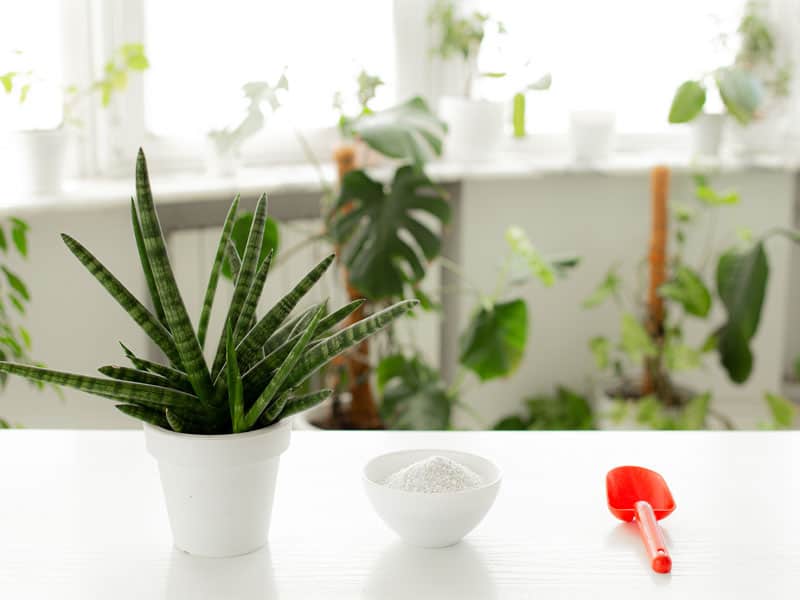
Soil
As with all succulents, the most important aspect of care is soil drainage! It is imperative that the soil drains quickly and the pot does not hold water. Use soil specifically for succulents (here's a guide on how to make your own).
Fertilizer
Use fertilizer sparingly in your plant’s soil as over-fertilizing your plant can kill it. Never plant sansevieria cylindrica in pre-fertilized soil.
Water and Humidity

If the cylindrica has one weakness, it is overwatering. During the growing season, water it about once every two weeks. Be sure to water the soil and not the leaves.
If the base of the stalks becomes yellow or swollen, it means you have overwatered. Water enough that the soil is all moist, but it drains completely before your next watering.
Sansevieria cylindrica does not tolerate humidity very well. If you live in a humid area, you should bring your plant indoors during humid weather to prevent discoloration.
Light and Temperature
Cylindrica thrives in direct light! This promotes taller, straighter leaves. They are drought-resistant as well.
The sum of these traits means that cylindrica is a great outdoor plant, but can tolerate indoors if it has enough bright light. If it lacks light, you can expect its growth to stagnate (though it will probably survive).
Related Content: Rose Succulent Care, is it actually succulent?
How to Propagate Sansevieria
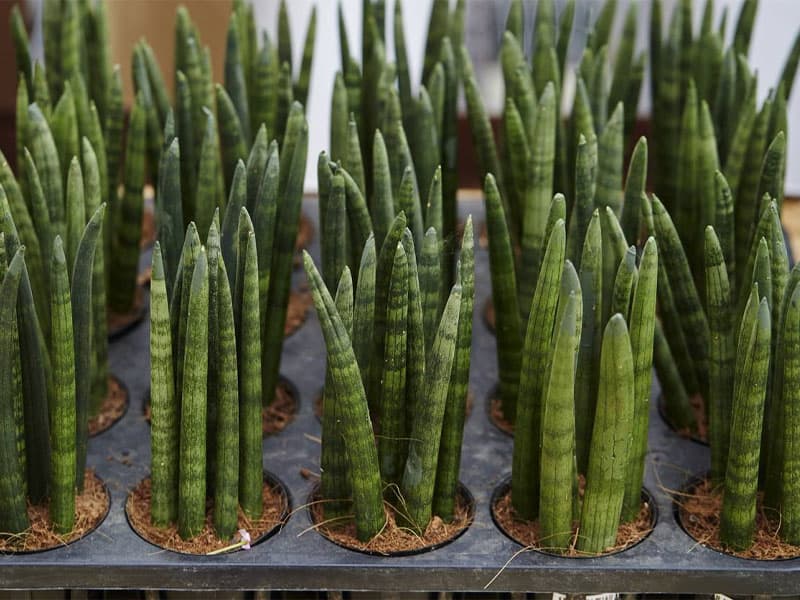
As with many plants that utilize rhizomes, they often send off "runners" or offshoots. These can be untangled and separated with a sharp blade to separate mature plants that have grown together.
Wait until the stalks of your cylindrica are about 6 inches tall before separating them. Bear in mind, this plant is not averse to crowded, tangled conditions. Separate only if you want to propagate or move it into a larger pot.
Cuttings
African Spear can also be propagated via leaf cuttings, albeit slowly. Take a stalk and cut it into sections about 3 inches long. After leaving them out to callus, plant them in soil with the right side up.
It's important that they maintain the same orientation as before they were cut. Plants don't grow upside-down very well.
New roots should sprout, eventually. Try the rooting hormone if you're not having any success.
Pests
Aphids, vine weevils, and mealybugs are the common sansevieria cylindrica invaders. Spear plants that grow inside in a controlled environment are less likely to show signs of a pest infestation than succulents growing outside. Inspect your plant regularly and remove insects as and when you see them.
Diseases
African snake spears are generally pest and disease resistant; however, overwatering can cause their roots to rot and their leaves to become discolored. Check your plant regularly for signs of pests or diseases and act quickly to keep your plant healthy.
FAQs:
How tall do spear sansevieria grow?
These plants can grow up to six feet tall. Keep their spears tame by braiding them while the plant is young.
How to braid sansevieria cylindrica
Sansevieria cylindrica can be often found in a braided state, though some people like to keep it 'normally'. Here's a step-by-step guide on how to braid Sansevieria Cylindrica. It's very easy to care for a braided snake plant.
Can you cut sansevieria cylindrica, aka the snake plant?
These plants do not require regular pruning, but if you wish to prune the plant for cosmetic purposes, you can do it.
Should I plant the African spear in direct sunlight?
You can plant your African spear in moderate to bright sunlight and even in full sunlight. This plant is very versatile and can grow in shade and sunlight indoors or outside.
Can I cut the brown tips off my cylindrica snake plant?
Succulent growers should trim damaged areas of the plants to keep them healthy and aesthetic. You might want to trim the discolored brown tips off the plant if your succulent has become sunburnt.
Should snake plants grow in small pots?
Yes, snake plants grow particularly well in pots that are a little small for them. If you want your plant to grow to its full potential, you should move it to a larger pot once it has outgrown its current pot.
Should I mist my succulent?
Nop, you should never mist your succulent plant. Misting your succulent could cause it to soak up excess water which may lead to soggy leaves and even root rot in some cases.
Can I grow my snake plant indoors?
Yes, you can grow your snake plant indoors as long as it is getting sufficient sunlight.
How long will my succulent live without sunlight?
Succulents will not survive for more than 10 days without sufficient sunlight. Sunlight is the most important factor for succulents, so if you want your plant to grow to its full potential, you should give it the house of sunlight that it needs.
How long can my sansevieria cylindrica go without water?
African spear plant could live for up to three months without being watered depending on the time of year.
Sources:


SaraNoa mark
I just bought a rhizome of African Spear from ebay and it came with a dead looking tip so without researching it I cut it off. I only got one cutting in the mail. If I cut off the spear tip does this mean it will not multiply? And grow additional spears? I feel very sorry and stupid, please help with advice?
Carmine
Hey SaraNoa,
The dead-looking tip is normal, it helps defend the plant!
That being said, the plant will probably still grow and multiply. Allow It to callus over by leaving the cutting on a window sill for about a week. Then plant it in dirt - make sure it is oriented correctly! The bottom still needs to be facing downwards!
Christel
May I simply just say what a comfort to discover a person that actually knows what they are discussing on the net.
You certainly know how to bring a problem to light and make it important.
More people ought to read this and understand this side of your story.
I was surprised you're not more popular because you surely possess the
gift.
Katharina
I do not even know how I ended up here, but I thought this post was good.
I do not know who you are but certainly you are going to a famous blogger if you
aren't already 😉 Cheers!
Mason
I think that is among the most important info for me.
And i'm happy studying your article. But wanna commentary on some basic issues, The web site style is ideal, the articles is actually excellent :
D. Good activity, cheers
SyAk
Great info! I've been searching for this sansevieria & with your tips, I think I'll do well with it!
Patrick Grubbs
Best of luck!
Aleigh
Hello!
I just got an African Spear from my local nursery. There’s about 7 Spears’s currently and one of the tips is yellow and shriveling up. It looks like it’s actively spreading down the spear and I’m wondering if I should cut it off? And if so will it heal up alright? I love this plant and don’t want to hurt it!!
Thank you!
Patrick Grubbs
It's not unusual for the tips to yellow and dry out, but if it's spreading more than an half an inch or so, something is wrong. It may be that the plant is underwatered. I'd cut off that section to stop the spread, but know that the tip won't grow back.
Katie
Good advice!
Michelle
I just bought an African Spear and want to replant in a bigger pot. Do I need a special soil?
Patrick Grubbs
Standard succulent soil will do. Here's some more info for you!
https://www.sublimesucculents.com/succulent-soil/
Tina
the base of my sansevieria turn yellow, some are dying. I think it relates to root rot. what can I do to save them. I already clean them out and let them dry. Should I report to new soil or should I cut off the yellow base. Many thanks
Patrick Grubbs
Yeah, that sounds like root rot from overwatering.
The only thing you can try to do is cut above the yellow part. Repotting won't help at this point. Unfortunately, Sansevieria don't root very well from cuttings, so it's unlikely to help. Good luck, though!
Sara T.
Thank you for the helpful info! I have a couple of spears that have developed dry, yellow spots and a withered tip - am I under watering? Also, when do you decide when to re-pot them? Can this be done in the winter or is it better to wait until spring (this plant is kept indoors)?
Patrick Grubbs
Yeah, that sounds like underwatering... or maybe just aging? Mine is over a couple decades old and it has several spears like that.
I've also found that they enjoy being rootbound. Once you see the rhizomes at the surface you could up-pot it then, but if mine got any bigger I would have to plant it in the ground. For indoor plants - repot whenever!
Barryvv
Is it possible to grow sansevieria.from seed?
Mine are loaded with seeds.
Patrick Grubbs
Yes, very possible! Here's a guide:
https://www.sublimesucculents.com/how-to-grow-succulents-cacti-from-seeds/
Emma
My snake plant cylindrica traveled with me from college to home due to COVID-19. From either getting cold in the car or improper watering, 2 of the stalks withered so I cut them down to where they were green, but that has stopped them from withering from the top down. Should I have let the dead stalks, and what do I do about them now?
Patrick Grubbs
Usually cutting down to the healthy part is a good move. Cylindrica won't continue growing on the same stalk, however, you'll just have to wait for it to grow new stalks.
FRANCES a PEREZ
When should the tie on top of a braided African spear plant be untied? An indentation is starting to form.
Thank you
Debbie
I just bought 6 of these guys from an ad on NextDoor.com. Living in Arizona I’m wondering if I should plant them inside or outside? My house has over hangs and does not get a lot of light. I already have the cactus mix mentioned in an earlier post.
Patrick Grubbs
The braids are really just to catch you eye, the plant can't grow like that long term. Unbraid it whenever you want.
Patrick Grubbs
You could plant them in either place and they would do fine. They don't need all that much light anyway.
Marwa Chatti
Thank you for this post. It's very helpful. I repotted my sensivieria today and when I took it off the first pot I noticed a worm sticking to the side of the mass of dirt and some small greenish spots. Is that a bad sign?! Are these spots mold? Any advice please?
Susan
I have an African Spear that I bought, several plants, kind of wild! But, several of the ends of the spears have turned brown and shriveled. Not just tips, but half way down the spear of the plant. What can I do about this? Cut them? Will they come back or is this a sign that something is wrong??